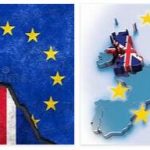Against Breaches between the UK and the EU? Part II
The successor, John Major, also experienced the enormous power that the EF unleashed within the party. Among other things, he was prime minister when the comprehensive Maastricht Treaty was to be ratified in 1993.
In 1997, “New Labor” and prime ministerial candidate Tony Blair went to the polls promising a new approach to Europe. In the first years under Blair, the UK appeared more as an initiator and less as a brake on the EU integration process. The Blair government has often emphasized in European politics that it is impossible to win with its own arguments without participating in the discussion: Protecting British interests in the EU therefore required active participation in Brussels.
Mr Blair also argued that there was no conflict between an active UK in the EU and a close partnership with the US. Instead, he believed that Britain could be the bridge that connected the United States and the European Union. Mr Blair received a lot of criticism from the opposition, the press and the Europe-skeptical part of the population for his efforts to make Britain a more active partner in the EU. Towards the end of his reign, he also developed a more tense relationship with his European partners, largely due to his support for US President George W. Bush in the controversial Iraq war. In this question, the United Kingdom separated teams from old EU countries such as France and Germany.
4: EU in British debate
In EU matters, the UK has often run on its own track in meetings with European partners. At the same time, the issue has a long tradition of splitting the British parties internally, and the EU has probably created headaches for many British party leaders and prime ministers internally. This history also makes this case extra challenging for David Cameron.
D a Conservative party is divided in the middle . On the party’s outer right wing, there are several significant, critical EU voices. Among other things, the former Minister of Defense Liam Fox says openly that he wants Britain out of the EU. There are few profiled EU supporters in the party. In the middle are those who, like Prime Minister Cameron, are skeptical of the rapid pace and scope of European integration, but who still want British membership. The desire is for a renegotiated membership with the main emphasis on free trade and minimal influence for the EU over British working life, fiscal policy, welfare and civil rights.
In the background lurks anti-immigrant and EU-critical UKIP . Opinion polls show that they are currently hijacking votes from the Conservatives on the EU issue.
In the opposition party Labor , the positive forces are more numerous, but here too the EU issue is inflamed and has great potential for creating division. This makes it difficult for opposition leader Ed Miliband to get a clear voice in the debate. For Labor, it is also a problem that the party has little in common with European sister parties in the view of what the EU should be. Social Democrats on the European continent often have a higher level of ambition when it comes to the EU’s social dimension and influence over national welfare legislation.
The most pro-EU party in Britain is the Conservative government partner, the Liberal Democrats . But party and party leader Nick Clegg is maneuvering in difficult terrain. Although European cooperation is a matter of the heart for both him and the party, the costs are high. The case divides the government internally, and there is little indication that there are many votes to be found on the “yes side”.
According to PROGRAMINGPLEASE, the EU question thus creates challenges both internally in the major parties, Labor and the Conservatives, and in the governing coalition between the Conservatives and the Liberal Democrats.
5: What kind of connection?
So what future EU models are there for the UK? Here it is possible to think of several alternatives.
- ” Status quo”: The situation remains much as it has been. The UK and the EU continue their common motley path, where dissatisfaction is followed by mutual adaptation.
- ” Renegotiated model “: The UK succeeds in renegotiating its EU affiliation, and gets approval for a special agreement. If the EU accepts such a special solution for the United Kingdom, it could have consequences for the entire EU. In the extreme, it could mean an EU “à la carte” or a ” Europe at multiple speeds “. This means that each member state will be able to choose which areas they will cooperate in and how deeply they will cooperate. For example, one could imagine that the UK would belong to an external fringe zone of the EU, with a membership limited to the internal market.
- ” Exclusion”, possibly with associated (loosely connected) membership as Norway has through the EEA agreement (elaborated below).













